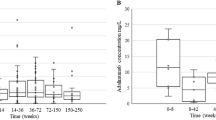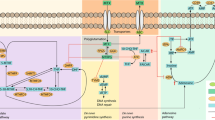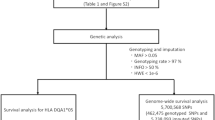Abstract
Crohn’s disease (CD) is a chronic condition, which affects the immune system. It can also affect any part of the digestive tract and be associated with external manifestations. The causes of the disease remain unknown, although it seems to be the result of a combination of factors, such as genetic predisposition, environment, lifestyle and the composition of the microbiota, among others. The treatment protocol begins with a change in eating and smoking habits, and is continued with different lines of treatment, including corticosteroids, immunomodulators and biologic therapy (infliximab and adalimumab), which have shown differences in response among patients, especially with biologic treatment. Several studies have considered the possibility that these differences in response are caused by the genetic variability of patients. Many genes have been investigated as potential predictors of response to biological drugs, such as ADAM17, ATG16L1, EMSY, CASP9, CCNY, CNTN5, FASLG, FCGR, NOD2, PTGER4, IL13, IL1B, IL27, IL11, IL17F, TNF and TNFR genes. In this review, we will gather the information on influence of gene polymorphisms investigated to date on response to biological drugs in CD patients.
This is a preview of subscription content, access via your institution
Access options
Subscribe to this journal
Receive 6 print issues and online access
$259.00 per year
only $43.17 per issue
Buy this article
- Purchase on Springer Link
- Instant access to full article PDF
Prices may be subject to local taxes which are calculated during checkout
Similar content being viewed by others
References
Kalla R, Ventham NT, Satsangi J, Arnott IDR . Crohn’s disease. BMJ 2014; 349: g6670.
Molodecky NA, Soon IS, Rabi DM, Ghali WA, Ferris M, Chernoff G et al. Increasing incidence and prevalence of the inflammatory bowel diseases with time, based on systematic review. Gastroenterology 2012; 142: 46–54.
Ananthakrishnan AN . Epidemiology and risk factors for IBD. Nat Rev Gastroenterol Hepatol 2015; 12: 205–217.
Ananthakrishnan AN, Higuchi LM, Huang ES, Khalili H, Richter JM, Fuchs CS et al. Aspirin, nonsteroidal anti-inflammatory drug use, and risk for Crohn disease and ulcerative colitis. Ann Intern Med 2012; 156: 350–359.
Mahid SS, Minor KS, Soto RE, Hornung CA, Galandiuk S . Smoking and inflammatory bowel disease: a meta-analysis. Mayo Clin Proc 2006; 81: 1462–1716.
Mahid SS, Minor KS, Stromberg AJ, Galandiuk S . Active and passive smoking in childhood is related to the development of inflammatory bowel disease. Inflamm Bowel Dis 2007; 13: 431–438.
Timm S, Svanes C, Janson C, Sigsgaard T, Johannessen A, Gislason T et al. Place of upbringing in early childhood as related to inflammatory bowel diseases in adulthood: a population-based cohort study in Northern Europe. Eur J Epidemiol 2014; 29: 429–437.
Halme L, Paavola-Sakki P, Turunen U, Lappalainen M, Farkkila M, Kontula K . Family and twin studies in inflammatory bowel disease. World J Gastroenterol 2006; 12: 3668–3672.
Muro M, López-Hernández R, Mrowiec A . Immunogenetic biomarkers in inflammatory bowel diseases: role of the IBD3 region. World J Gastroenterol 2014; 20: 15037–15048.
Liu JZ, van Sommeren S, Huang H, Ng SC, Alberts R, Takahashi A et al. Association analyses identify 38 susceptibility loci for inflammatory bowel disease and highlight shared genetic risk across populations. Nat Genet 2015; 47: 979–986.
Hugot JP, Chamaillard M, Zouali H, Lesage S, Cézard JP, Belaiche J et al. Association of NOD2 leucine-rich repeat variants with susceptibility to Crohn’s disease. Nature 2001; 411: 599–603.
Ogura Y, Bonen DK, Inohara N, Nicolae DL, Chen FF, Ramos R et al. A frameshift mutation in NOD2 associated with susceptibility to Crohn’s disease. Nature 2001; 411: 603–606.
de Lange KM, Barrett JC . Understanding inflammatory bowel disease via immunogenetics. J Autoimmun 2015; 64: 91–100.
Philpott DJ, Sorbara MT, Robertson SJ, Croitoru K, Girardin SE . NOD proteins: regulators of inflammation in health and disease. Nat Rev Immunol 2014; 14: 9–23.
Enfermedad de Crohn [Internet]. Available at: http://www.elsevierinstituciones.com/ficheros/booktemplate/9788475927220/files/Capitulo25.pdf (accessed on 20 September 2015).
van der Heijde DM, van ’t Hof M, van Riel PL, van de Putte LB . Development of a disease activity score based on judgment in clinical practice by rheumatologists. J Rheumatol 1993; 20: 579–581.
Dignass A, Van Assche G, Lindsay JO, Lémann M, Söderholm J, Colombel JF et al. The second European evidence-based consensus on the diagnosis and management of Crohn’s disease: current management. J Crohns Colitis 2010; 4: 28–62.
IBD Surveys/Questionnaires for Clinical Practice. Available at: http://www.sciencedirect.com/science/article/pii/S0022399905004915# (accessed on 19 July 2016).
Harvey RF, Bradshaw JM . A simple index of Crohn’s-disease activity. Lancet 1980; 315: 514.
Mozaffari S, Nikfar S, Abdolghaffari AH, Abdollahi M . New biologic therapeutics for ulcerative colitis and Crohn’s disease. Expert Opin Biol Ther 2014; 14: 583–600.
Sandborn WJ, Gasink C, Gao L-L, Blank MA, Johanns J, Guzzo C et al. Ustekinumab induction and maintenance therapy in refractory Crohn’s disease. N Engl J Med 2012; 367: 1519–1528.
Vuitton L, Koch S, Peyrin-Biroulet L . Janus kinase inhibition with tofacitinib: changing the face of inflammatory bowel disease treatment. Curr Drug Targets 2013; 14: 1385–1391.
Mayer L, Kaser A, Blumberg RS . Dead on arrival: understanding the failure of CTLA4-immunoglobulin therapy in inflammatory bowel disease. Gastroenterology 2012; 143: 13–17.
European Medicines Agency – Find medicine – Humira [Internet]. Available at: http://www.ema.europa.eu/ema/index.jsp?curl=pages/medicines/human/medicines/000481/human_med_000822.jsp&mid=WC0b01ac058001d124.
European Medicines Agency – Find medicine – Remicade [Internet]. Available at: http://www.ema.europa.eu/ema/index.jsp?curl=pages/medicines/human/medicines/000240/human_med_001023.jsp&mid=WC0b01ac058001d124.
European Medicines Agency – Find medicine – Tysabri [Internet]. Available at: http://www.ema.europa.eu/ema/index.jsp?curl=pages/medicines/human/medicines/000603/human_med_001119.jsp&mid=WC0b01ac058001d124.
European Medicines Agency – Find medicine – Entyvio [Internet]. Available at: http://www.ema.europa.eu/ema/index.jsp?curl=pages/medicines/human/medicines/002782/human_med_001751.jsp&mid=WC0b01ac058001d124.
European Medicines Agency – Find medicine – Stelara [Internet]. Available at: http://www.ema.europa.eu/ema/index.jsp?curl=pages/medicines/human/medicines/000958/human_med_001065.jsp.
Definitions for genomic biomarkers, pharmacogenomics, pharmacogenetics, genomic data and sample coding categories. [Internet]. Available at: http://www.ema.europa.eu/docs/en_GB/document_library/Scientific_guideline/2009/09/WC500002880.pdf (accessed on 9 May 2016).
Murdaca G, Spanò F, Contatore M, Guastalla A, Magnani O, Puppo F . Pharmacogenetics of etanercept: role of TNF-α gene polymorphisms in improving its efficacy. Expert Opin Drug Metab Toxicol 2014; 10: 1703–1710.
Hlavaty T, Pierik M, Henckaerts L, Ferrante M, Joossens S, Van Schuerbeek N et al. Polymorphisms in apoptosis genes predict response to infliximab therapy in luminal and fistulizing Crohn’s disease. Aliment Pharmacol Ther 2005; 22: 613–626.
Matsukura H, Ikeda S, Yoshimura N, Takazoe M, Muramatsu M . Genetic polymorphisms of tumour necrosis factor receptor superfamily 1A and 1B affect responses to infliximab in Japanese patients with Crohn’s disease. Aliment Pharmacol Ther 2008; 27: 765–770.
Dideberg V, Théâtre E, Farnir F, Vermeire S, Rutgeerts P, De Vos M et al. The TNF/ADAM 17 system: implication of an ADAM 17 haplotype in the clinical response to infliximab in Crohn’s disease. Pharmacogenet Genomics 2006; 16: 727–734.
Black RA, Rauch CT, Kozlosky CJ, Peschon JJ, Slack JL, Wolfson MF et al. A metalloproteinase disintegrin that releases tumour-necrosis factor-alpha fromcells. Nature 1997; 385: 729–733.
Patel IR, Attur MG, Patel RN, Stuchin SA, Abagyan RA, Abramson SB et al. TNF-alpha convertase enzyme from human arthritis-affected cartilage: isolation of cDNA by differential display, expression of the active enzyme, and regulation of TNF-alpha. J Immunol 1998; 160: 4570–4579.
Scolaro BL, dos Santos E, Ferreira LE, França PHC, de, Kleinubing H Jr, Kotze PG et al. T300A genetic polymorphism: a susceptibility factor for Crohn’s disease? Arq Gastroenterol 2014; 51: 97–101.
Koder S, Repnik K, Ferkolj I, Pernat C, Skok P, Weersma RK et al. Genetic polymorphism in ATG16L1 gene influences the response to adalimumab in Crohn’s disease patients. Pharmacogenomics 2015; 16: 191–204.
Hughes-Davies L, Huntsman D, Ruas M, Fuks F, Bye J, Chin S-F et al. EMSY links the BRCA2 pathway to sporadic breast and ovarian cancer. Cell 2003; 115: 523–535.
Duan H, Orth K, Chinnaiyan AM, Poirier GG, Froelich CJ, He WW et al. ICE-LAP6, a novel member of the ICE/Ced-3 gene family, is activated by the cytotoxic T cell protease granzyme B. J Biol Chem 1996; 271: 16720–16724.
Li P, Nijhawan D, Budihardjo I, Srinivasula SM, Ahmad M, Alnemri ES et al. Cytochrome c and dATP-dependent formation of Apaf-1/caspase-9 complex initiates an apoptotic protease cascade. Cell 1997; 91: 479–489.
Li X, Wang X, Liu G, Li R, Yu L . Identification and characterization of cyclin X which activates transcriptional activities of c-Myc. Mol Biol Rep 2009; 36: 97–103.
Kamei Y, Takeda Y, Teramoto K, Tsutsumi O, Taketani Y, Watanabe K . Human NB-2 of the contactin subgroup molecules: chromosomal localization of the gene (CNTN5) and distinct expression pattern from other subgroup members. Genomics 2000; 69: 113–119.
Thomas D, Gazouli M, Karantanos T, Rigoglou S, Karamanolis G, Bramis K et al. Association of rs1568885, rs1813443 and rs4411591 polymorphisms with anti-TNF medication response in Greek patients with Crohn’s disease. World J Gastroenterol 2014; 20: 3609–3614.
Takahashi T, Tanaka M, Inazawa J, Abe T, Suda T, Nagata S . Human Fas ligand: gene structure, chromosomal location and species specificity. Int Immunol 1994; 6: 1567–1574.
Stuart PM, Griffith TS, Usui N, Pepose J, Yu X, Ferguson TA . CD95 ligand (FasL)-induced apoptosis is necessary for corneal allograft survival. J Clin Invest 1997; 99: 396–402.
Steenholdt C, Enevold C, Ainsworth Ma, Brynskov J, Thomsen OO, Bendtzen K . Genetic polymorphisms of tumour necrosis factor receptor superfamily 1b and fas ligand are associated with clinical efficacy and/or acute severe infusion reactions to infliximab in Crohn’s disease. Aliment Pharmacol Ther 2012; 36: 650–659.
Qiu WQ, de Bruin D, Brownstein BH, Pearse R, Ravetch JV . Organization of the human and mouse low-affinity Fc gamma R genes: duplication and recombination. Science 1990; 248: 732–735.
Koene HR, Kleijer M, Algra J, Roos D, von dem Borne AE, de Haas M . Fc gammaRIIIa-158V/F polymorphism influences the binding of IgG by natural killer cell Fc gammaRIIIa, independently of the Fc gammaRIIIa-48L/R/H phenotype. Blood 1997; 90: 1109–1114.
Louis EJ, Watier HE, Schreiber S, Hampe J, Taillard F, Olson A et al. Polymorphism in IgG Fc receptor gene FCGR3A and response to infliximab in Crohn’s disease: a subanalysis of the ACCENT I study. Pharmacogenet Genomics 2006; 16: 911–914.
Moroi R, Endo K, Kinouchi Y, Shiga H, Kakuta Y, Kuroha M et al. FCGR3A-158 polymorphism influences the biological response to infliximab in Crohn’s disease through affecting the ADCC activity. Immunogenetics 2013; 65: 265–271.
Papamichael K, Gazouli M, Karakoidas C, Panayotou I . Association of TNF and FcγRIIIA gene polymorphisms with differential response to infliximab in a Greek cohort of Crohn’s disease patients. Ann Gastroenterol 2011; 24: 35–40.
Willot S, Vermeire S, Ohresser M, Rutgeerts P, Paintaud G, Belaiche J et al. No association between C-reactive protein gene polymorphisms and decrease of C-reactive protein serum concentration after infliximab treatment in Crohn’s disease. Pharmacogenet Genomics 2006; 16: 37–42.
Gilberts EC, Greenstein AJ, Katsel P, Harpaz N, Greenstein RJ . Molecular evidence for two forms of Crohn disease. Proc Natl Acad Sci USA 1994; 91: 12721–12724.
Hugot JP, Laurent-Puig P, Gower-Rousseau C, Olson JM, Lee JC, Beaugerie L et al. Mapping of a susceptibility locus for Crohn’s disease on chromosome 16. Nature 1996; 379: 821–823.
Germain A, Guéant R-M, Chamaillard M, Allen PB, Bresler L, Guéant J-L et al. NOD2 gene variant is a risk factor for postoperative complications in patients with Crohn’s disease: a genetic association study. Surgery 2016; 160: 74–80.
Lu C, Waugh A, Bailey RJ, Cherry R, Dieleman La, Gramlich L et al. Crohn’s disease genotypes of patients in remission vs relapses after infliximab discontinuation. World J Gastroenterol 2012; 18: 5058–5064.
Barreiro-de Acosta M, Ouburg S, Morré Sa, Crusius JB, Lorenzo a, Potel J et al. NOD2, CD14 and TLR4 mutations do not influence response to adalimumab in patients with Crohn’s disease: A preliminary report. Rev Esp Enfermedades Dig 2010; 102: 591–595.
Mascheretti S, Hampe J, Croucher PJP, Nikolaus S, Andus T, Schubert S et al. Response to infliximab treatment in Crohn’s disease is not associated with mutations in the CARD15 (NOD2) gene: an analysis in 534 patients from two multicenter, prospective GCP-level trials. Pharmacogenetics 2002; 12: 509–515.
Lehmann JM, McKee DD, Watson MA, Willson TM, Moore JT, Kliewer SA . The human orphan nuclear receptor PXR is activated by compounds that regulate CYP3A4 gene expression and cause drug interactions. J Clin Invest 1998; 102: 1016–1023.
Bertilsson G, Heidrich J, Svensson K, Asman M, Jendeberg L, Sydow-Bäckman M et al. Identification of a human nuclear receptor defines a new signaling pathway for CYP3A induction. Proc Natl Acad Sci USA 1998; 95: 12208–12213.
Duncan AM, Anderson LL, Funk CD, Abramovitz M, Adam M . Chromosomal localization of the human prostanoid receptor gene family. Genomics 1995; 25: 740–742.
Li X, Commane M, Nie H, Hua X, Chatterjee-Kishore M, Wald D et al. Act1, an NF-kappa B-activating protein. Proc Natl Acad Sci USA 2000; 97: 10489–10493.
Leonardi A, Chariot A, Claudio E, Cunningham K, Siebenlist U . CIKS, a connection to Ikappa B kinase and stress-activated protein kinase. Proc Natl Acad Sci USA 2000; 97: 10494–10499.
Urabe S, Isomoto H, Ishida T, Maeda K, Inamine T, Kondo S et al. Genetic polymorphisms of IL-17F and TRAF3IP2 could be predictive factors of the long-term effect of infliximab against Crohn’s disease. Biomed Res Int 2015; 2015: 416838.
McKinley D, Wu Q, Yang-Feng T, Yang YC . Genomic sequence and chromosomal location of human interleukin-11 gene (IL11). Genomics 1992; 13: 814–819.
Medrano LM, Taxonera C, González-Artacho C, Pascual V, Gómez-García M, Barreiro-de Acosta M et al. Response to infliximab in Crohn’s disease: genetic analysis supporting expression profile. Mediators Inflamm 2015; 2015: 318207.
Punnonen J, Aversa G, Cocks BG, McKenzie AN, Menon S, Zurawski G et al. Interleukin 13 induces interleukin 4-independent IgG4 and IgE synthesis and CD23 expression by human B cells. Proc Natl Acad Sci USA 1993; 90: 3730–3734.
Pflanz S, Timans JC, Cheung J, Rosales R, Kanzler H, Gilbert J et al. IL-27, a heterodimeric cytokine composed of EBI3 and p28 protein, induces proliferation of naive CD4+ T cells. Immunity 2002; 16: 779–790.
Starnes T, Robertson MJ, Sledge G, Kelich S, Nakshatri H, Broxmeyer HE et al. Cutting edge: IL-17F, a novel cytokine selectively expressed in activated T cells and monocytes, regulates angiogenesis and endothelial cell cytokine production. J Immunol 2001; 167: 4137–4140.
Kawaguchi M, Onuchic LF, Li XD, Essayan DM, Schroeder J, Xiao HQ et al. Identification of a novel cytokine, ML-1, and its expression in subjects with asthma. J Immunol 2001; 167: 4430–4435.
Old LJ . Tumor necrosis factor (TNF). Science 1985; 230: 630–632.
Song GG, Seo YH, Kim J-H, Choi SJ, Ji JD, Lee YH . Association between TNF-α (-308A/G, -238A/G, -857 C/T) polymorphisms and responsiveness to TNF-α blockers in spondyloarthropathy, psoriasis and Crohn’s disease: a meta-analysis. Pharmacogenomics 2015; 16: 1427–1437.
Chen W, Xu H, Wang X, Gu J, Xiong H, Shi Y . The tumor necrosis factor receptor superfamily member 1B polymorphisms predict response to anti-TNF therapy in patients with autoimmune disease: a meta-analysis. Int Immunopharmacol 2015; 28: 146–153.
Balog A, Klausz G, Gál J, Molnár T, Nagy F, Ocsovszky I et al. Investigation of the prognostic value of TNF-alpha gene polymorphism among patients treated with infliximab, and the effects of infliximab therapy on TNF-alpha production and apoptosis. Pathobiology 2004; 71: 274–280.
Schall TJ, Lewis M, Koller KJ, Lee A, Rice GC, Wong GH et al. Molecular cloning and expression of a receptor for human tumor necrosis factor. Cell 1990; 61: 361–370.
Baker E, Chen LZ, Smith CA, Callen DF, Goodwin R, Sutherland GR . Chromosomal location of the human tumor necrosis factor receptor genes. Cytogenet Cell Genet 1991; 57: 117–118.
Pierik M, Vermeire S, Steen KV, Joossens S, Claessens G, Vlietinck R et al. Tumour necrosis factor-alpha receptor 1 and 2 polymorphisms in inflammatory bowel disease and their association with response to infliximab. Aliment Pharmacol Ther 2004; 20: 303–310.
Medrano LM, Taxonera C, Márquez A, Barreiro-de Acosta M, Gómez-García M, González-Artacho C et al. Role of TNFRSF1B polymorphisms in the response of Crohn’s disease patients to infliximab. Hum Immunol 2014; 75: 71–75.
Lee TH, Wisniewski HG, Vilcek J . A novel secretory tumor necrosis factor-inducible protein (TSG-6) is a member of the family of hyaluronate binding proteins, closely related to the adhesion receptor CD44. J Cell Biol 1992; 116: 545–557.
Wisniewski HG, Hua JC, Poppers DM, Naime D, Vilcek J, Cronstein BN . TNF/IL-1-inducible protein TSG-6 potentiates plasmin inhibition by inter-alpha-inhibitor and exerts a strong anti-inflammatory effect in vivo. J Immunol 1996; 156: 1609–1615.
Lesley J, Gál I, Mahoney DJ, Cordell MR, Rugg MS, Hyman R et al. TSG-6 modulates the interaction between hyaluronan and cell surface CD44. J Biol Chem 2004; 279: 25745–25754.
Rioux JD, Silverberg MS, Daly MJ, Steinhart AH, McLeod RS, Griffiths AM et al. Genomewide search in Canadian families with inflammatory bowel disease reveals two novel susceptibility loci. Am J Hum Genet 2000; 66: 1863–1870.
Lacruz-Guzmán D, Torres-Moreno D, Pedrero F, Romero-Cara P, García-Tercero I, Trujillo-Santos J et al. Influence of polymorphisms and TNF and IL1β serum concentration on the infliximab response in Crohn’s disease and ulcerative colitis. Eur J Clin Pharmacol 2013; 69: 431–438.
Dideberg V, Louis E, Farnir F, Bertoli S, Vermeire S, Rutgeerts P et al. Lymphotoxin alpha gene in Crohn’s disease patients: absence of implication in the response to infliximab in a large cohort study. Pharmacogenet Genomics 2006; 16: 369–373.
Rapti E, Gazouli M, Legaki E, Karamanolis G, Thomas D, Marinos E et al. Association of survivin promoter polymorphisms with inflammatory bowel disease and response to antitumor necrosis factor therapy. Genet Test Mol Biomarkers 2015; 19: 339–343.
Acknowledgements
The results of this investigation are part of the doctoral thesis presented by Teresa María Linares Pineda at the University of Granada.
Author information
Authors and Affiliations
Corresponding author
Ethics declarations
Competing interests
The authors declare no conflict of interest.
Rights and permissions
About this article
Cite this article
Linares-Pineda, T., Cañadas-Garre, M., Sánchez-Pozo, A. et al. Pharmacogenetic biomarkers of response in Crohn’s disease. Pharmacogenomics J 18, 1–13 (2018). https://doi.org/10.1038/tpj.2017.27
Received:
Revised:
Accepted:
Published:
Issue Date:
DOI: https://doi.org/10.1038/tpj.2017.27



